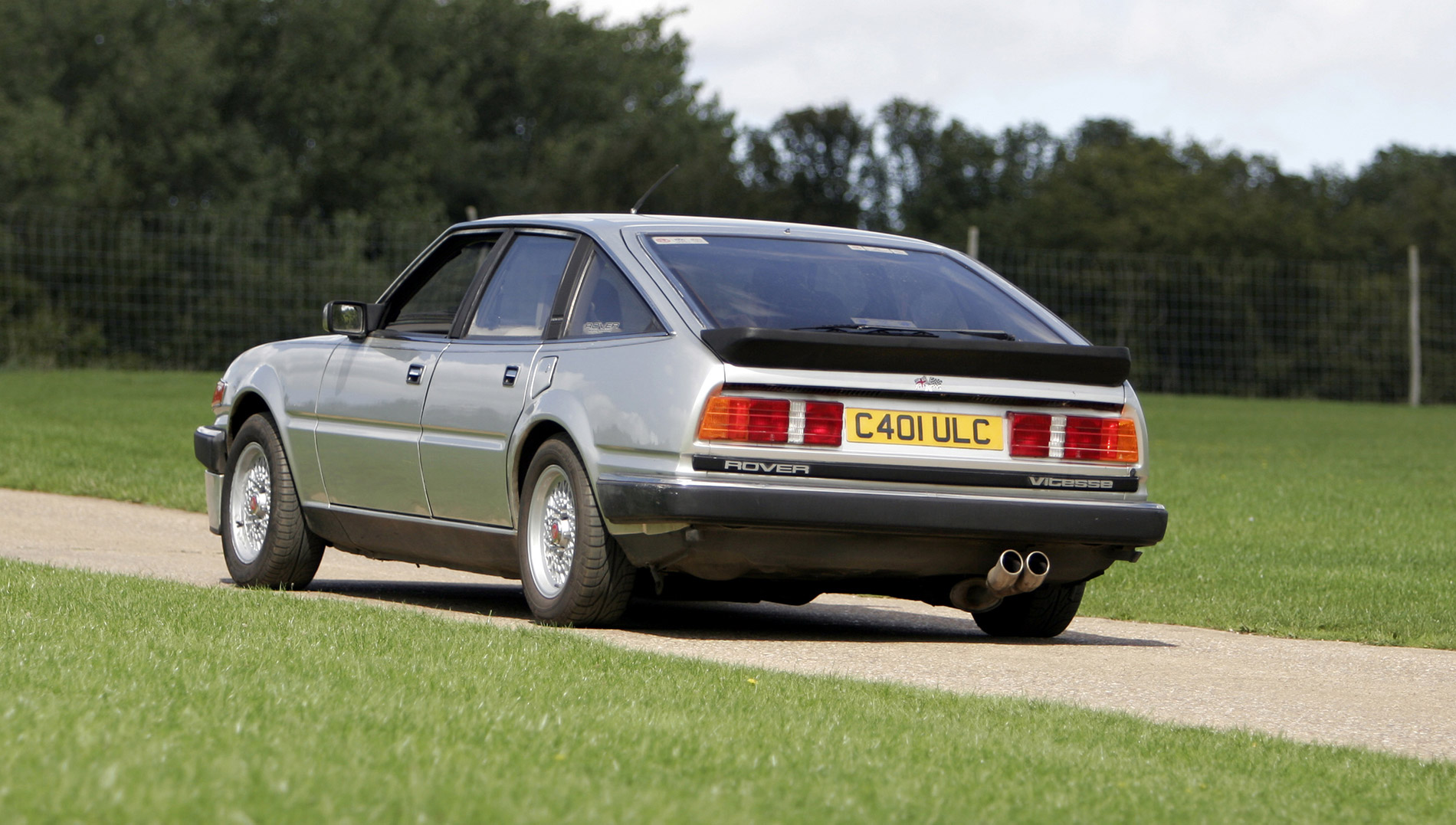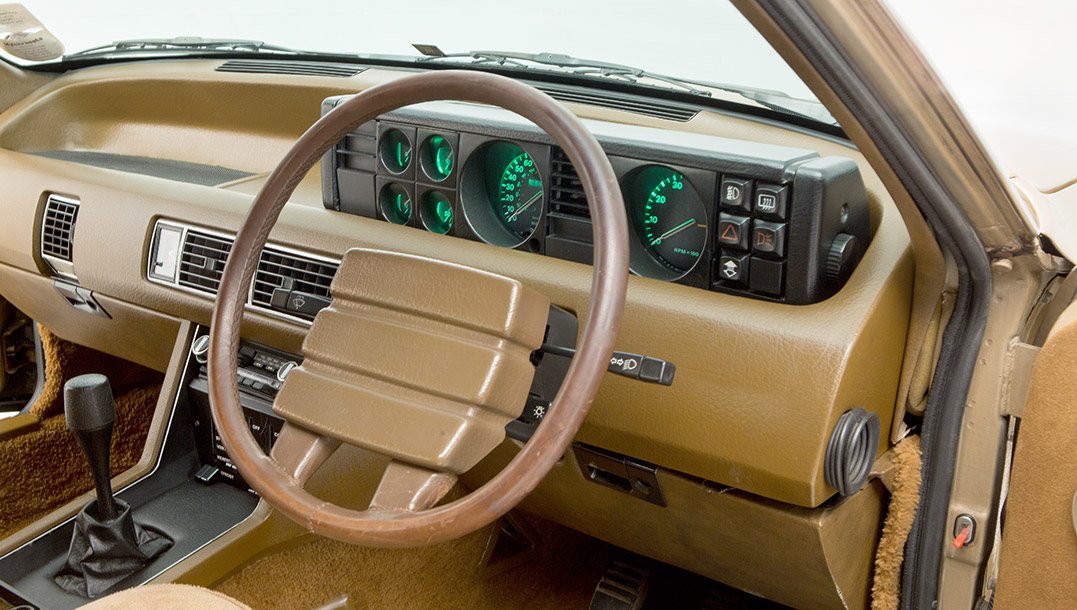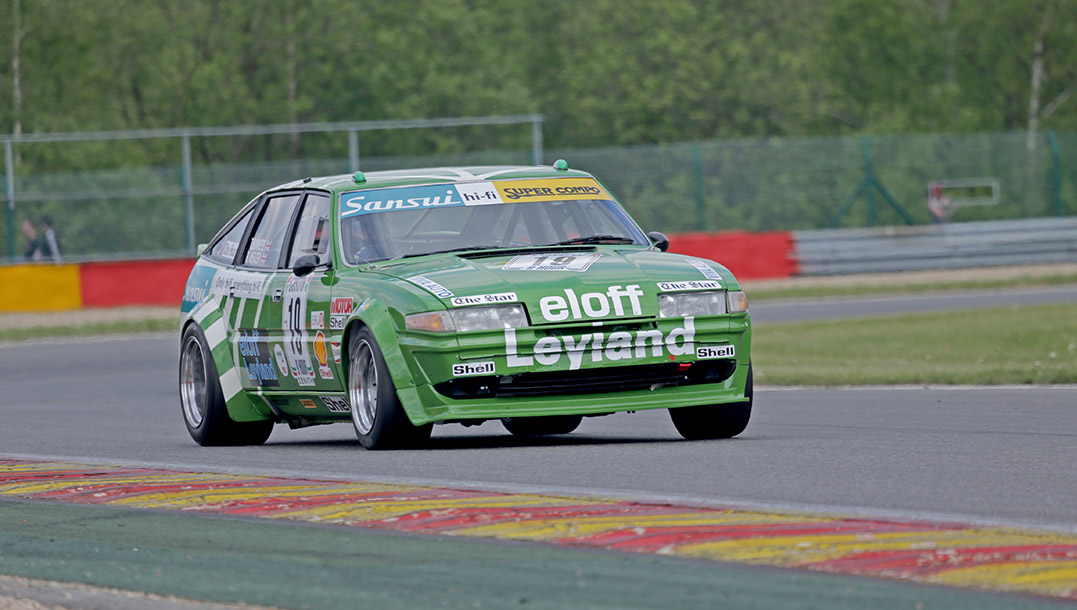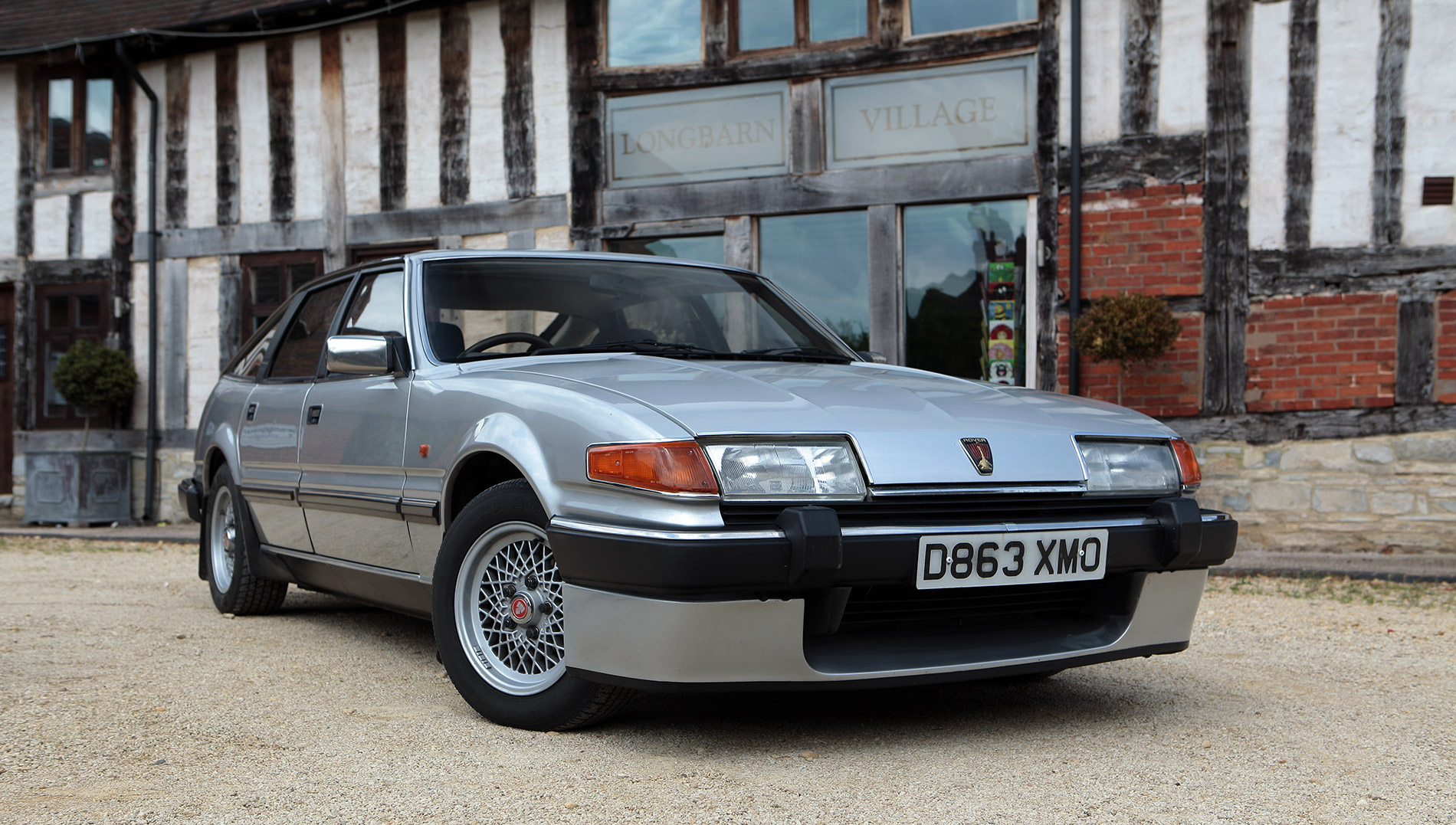The Rover SD1 stands as a hallmark in the British automotive landscape, encapsulating a blend of innovative engineering and aesthetic elegance. This was a car ahead of its time!
Here, we look at how the SD1 evolved from its initial blueprint to securing a prestigious spot amid venerable classic cars. Exploring the synergy of design that fused Rover's durability with Triumph elegance, we're guided by the visionary hands of Spen King and David Bache, whose collective ingenuity elevated it beyond mere transportation.
Understanding its engine options unveils how it catered to diverse performance appetites, ranging from fuel-efficient models to high-performance variants like the Vitesse. Additionally, we assess technological advancements that distinguished it during its era - luxurious interiors paired with pioneering mechanics such as MacPherson struts and five-speed gearboxes.
Moreover, the vehicle’s motorsport legacy underscores not only its competitive edge but also highlights why today it garners attention among collectors for both nostalgic value and investment potential. Through comparative analysis with contemporaries like Aston Martin or Alfa Romeo, this narrative contextualises the Rover SD1 within a broader motoring dialogue. The Rover SD1's distinct mix of historical significance, dynamic prowess and visual appeal makes it a prime selection for aficionados eager to explore the depths of car history while investing in a treasure that gains value as years pass.
The birth and evolution of the Rover SD1
The Rover SD1's inception stands as a tribute to the ingenuity of Britain, signifying its position as the ultimate entirely British-crafted model in the Rover lineage and indeed the last of its kind. This SD1 stands as a pivotal moment in the history of Rover vehicles, highlighting an extraordinary partnership between Rover and Triumph under the British Leyland umbrella, which fused their legendary craftsmanship. Indeed, this was the first Rover to feature a hatchback body design.
Collaboration between Rover and Triumph
The amalgamation of expertise from both Rover and Triumph in the early 1970’s paved the way for an unprecedented leap in design and engineering. The strategic alliance named Special Division aimed at creating something that was more than just another car; they envisioned a flagship that could redefine standards within the motor industry. Spen King, Gordon Bashford and David Bache were instrumental figures whose combined efforts culminated in a vehicle codenamed Special Division No. 1, or what we now know as the SD1. Although no production model was ever badged SD1, the name has stuck throughout the years.
This groundbreaking project harnessed their collective genius to give birth to a machine that would go on to clinch the prestigious European Car of the Year award in 1977, affirming its significance beyond mere aesthetics or performance metrics.
Design mastery behind the SD1
Drawing inspiration from contemporary Italian designs while maintaining quintessentially British elements made David Bache's work on this Rover model truly revolutionary. With the exception of the Rover P6 sourced V8 engine, the car was entirely of new design including body, engines, gearbox and styling . This new vision brought together form and function with such finesse that it left an indelible mark on automotive design language across Europe.
Beyond its striking appearance, every curve spoke volumes about innovation; particularly noteworthy was how effectively space utilisation had been reimagined within both passenger compartments and engine bay areas alike - thereby setting new benchmarks for executive cars moving forward.
Essentially, grasping why this specific vehicle is highly regarded requires acknowledging more than just its technical specs or performance feats. It involves recognising the ambitious vision driving its development - a vision that aimed to redefine luxury motoring experiences of its time. By blending elegance with advanced technology, it turned lofty ideas into reality, earning enduring admiration from enthusiasts globally.

Engine mastery and performance dynamics
The Rover SD1's engine lineup is a testament to the ingenuity of British engineering, offering a variety that catered to both the enthusiast craving V8 thrills and the pragmatist seeking reliable performance. The range boasted 4,6 and 8 cylinder engines and included a diesel version for economy, each designed with specific performance goals in mind.
Six-cylinder engines
The heart of any car lies under its bonnet, and for many models within the Rover SD1 series this was represented by robust six-cylinder engines. These powertrains were celebrated for their balance between fuel economy and output, demonstrating how efficiency need not be sacrificed for enjoyment behind the wheel. Notably present in variants such as the 2300 and 2600, these units laid down a solid foundation for what executive cars could achieve.
The introduction of Lucas fuel injection systems further enhanced their capabilities by ensuring more precise control over fuel delivery. This leap forward marked an evolution from carburettors to electronic management systems which significantly boosted overall vehicle performance while reducing emissions – a win-win scenario during times when environmental concerns began taking centre stage globally.
Turbocharged thrills
In contrast to its naturally aspirated siblings, the Rover SD turbo variant introduced adrenaline-pumping dynamics into everyday driving. Exemplifying high-performance engineering, this model used forced induction effectively, to deliver exhilarating acceleration coupled with refined handling characteristics. This turned it into a sought-after choice for both the dedicated aficionados and those desiring a bit more zest in their routine drives or leisurely outings. Beyond just speed, it underscored Rover’s commitment towards innovation across all aspects of automotive design – from aesthetics right through to mechanics - making it truly stand out amid contemporaries.
Iconic features and technological innovations
The Rover SD1's journey through the pages of British motoring history is as much a story of innovation as it is of style. Its spacious engine bay, combined with a smart fastback/hatchback five-door layout, sets the stage for an exploration into its luxurious interiors, MacPherson struts, and five-speed gearbox - features that distinguished this vehicle during its era.
Luxurious interiors
Rover’s commitment to comfort and luxury was evident in every stitch of the SD1's interior. With plush seating surfaces often finished in high-quality fabrics or leather upholstery, drivers found themselves cocooned in an environment that balanced sophistication with practicality. The car’s ergonomic design ensured all controls were within easy reach while providing ample space for both driver and passengers - a rare feat at the time.
The vehicle further charmed with its suite of enhancements, offering conveniences that outshone rivals and enriched the journey. This included electric windows and mirrors, and central locking systems - aspects now standard but revolutionary back then.

MacPherson struts
Suspension technology played a pivotal role in shaping Rover SD1’s road manners. The use of MacPherson struts on the front wheels contributed significantly to handling precision and ride comfort by offering improved stability over various terrains without compromising on agility - the hallmark of any executive saloon aspiring towards sporting prowess.
This innovative suspension system allowed for tighter steering response while absorbing shocks from uneven road surfaces more effectively than traditional setups used in other cars from that period - a testament to Rover engineers' foresight and ingenuity.
Five-speed gearbox
The inclusion of a five-speed manual gearbox was another forward-thinking feature aimed at enhancing fuel economy without sacrificing performance - a balance eagerly sought after by drivers conscious about running costs yet unwilling to forego dynamic acceleration when needed.
This caused a stir upon its release, mainly because automatic transmissions had dominated the market for executive vehicles like those made by Vanden Plas and other European brands such as Alfa Romeo and Aston Martin. These brands typically preferred smooth shifts over the direct control offered by manual transmissions.
Models ranging from the 2300 to the prestigious Vitesse variant pushed the boundaries of expectations regarding driving engagement versus efficiency, especially with advancements in turbocharged engines and Lucas fuel injection technologies. This complexity added to its overall appeal compared to its contemporaries during its peak production years from the mid-70s to the mid-80s when over 300,000 units were sold. This era marked a pivotal moment for the automotive industry, showcasing how innovation and consumer preferences can drive significant change.
The motorsport legacy of the Rover SD1
When we talk about the Rover SD1, it's impossible not to delve into its storied involvement in the European Touring Car Championship. The event showcased the car's remarkable prowess, solidifying its status as a formidable competitor in the racing realm.
European Touring Car Championship triumphs
The partnership between Rover and Tom Walkinshaw Racing was nothing short of legendary. This alliance showcased the potent fusion of creativity and relentless resolve in conquering the toughest obstacles presented by racing competitions. Their collaboration saw the Rover SD1 not just compete but dominate several races within this highly competitive arena.
This remarkable journey began when Tom Walkinshaw spotted potential in what many saw as merely an executive car. By harnessing sophisticated engineering techniques such as advanced Lucas fuel injection systems and leveraging turbocharged thrills that were relatively rare at that time, they transformed this British classic into a track beast capable of taking on other high-performance vehicles head-to-head.

Innovations that changed the game
Apart from their relentless pursuit of victory through mechanical excellence, one cannot overlook how strategic innovations played a crucial role. These included optimising weight distribution for better handling and integrating aerodynamic features that significantly improved speed efficiency without compromising reliability during long-distance endurance races - a hallmark necessity for any car participating in events like the European Touring Car Championship.
Such technological advancements didn't just contribute to winning titles; they set new benchmarks within motorsports engineering - inspiring generations thereafter.
Comparative analysis with contemporaries
Among its competitors were prestigious brands such as Aston Martin and Alfa Romeo, each contributing unique advantages to the contest.
Aston Martin luxury comparison
When considering luxury, one cannot overlook Aston Martin, a brand synonymous with opulence and high performance. The Rover SD1, while positioned as an executive car, offered a level of sophistication that rivalled that of Aston Martin at a more accessible price point. This equilibrium of elegance and cost-effectiveness distinguished it in the marketplace.
Focusing on interior amenities such as leather upholstery hinted at an upscale experience akin to what you'd expect from an Aston Martin. Yet, it is important to note how Rover managed this without veering into exorbitant pricing territory.
Alfa Romeo rivalry
The rivalry with Alfa Romeo brought out another facet of the Rover SD1 - its performance capabilities matched against those revered Italian sports saloons. Both brands boasted engines known for their vivacity; however, the introduction of models like the Vitesse highlighted how Rover could combine speed with everyday usability.
Illuminating this juxtaposition reveals contrasting ethos: Alfa Romeo’s dedication to sportiness versus Rover's aim for broad appeal by blending performance aspects within a practical family car frame.
In essence, when examining these comparisons during its prime years, the true prowess of the Rover SD1 emerges not merely from being able to stand toe-to-toe with illustrious names such as Aston Martin or Alfa Romeo in terms of luxury or performance respectively, but rather in carving out a unique niche for itself which straddled these domains adeptly. Its ability to offer both luxury and performance enabled it to captivate a diverse clientele, further securing its legendary status in automotive history.
Classic status and collectibility insights
Rover SD1: a coveted classic today
The allure of the Rover SD1 as a collector's item is undeniable. Having been crafted in excess of 300,000 times before its assembly lines halted in '86, the model carries a profound legacy that enchants global collectors. Its distinctive fusion of UK craftsmanship and elegant styling has elevated it to legendary status among vintage automobile aficionados. Market trends indicate a steady rise in demand for well-preserved examples, highlighting its enduring appeal among enthusiasts.
Rising popularity among collectors can be attributed to several factors. Firstly, its rarity and distinctive style make it stand out from other executive cars of its era. Secondly, owning such an emblematic piece of British motoring history carries prestige within collecting circles.

Understanding the appeal of this British motoring icon
The Rover SD1's ascent as a coveted classic isn't merely by chance; specific characteristics have cemented its legendary status among classic car enthusiasts. Its win as European Car of the Year in 1977 underscores not just contemporary acclaim but also long-term significance which adds gravitas to any collection featuring this model. Additionally, models like Vanden Plas EFI or the high-performance Vitesse version showcase how varied yet consistently innovative the range was - offering something for every level of enthusiast interest.
Another magnetic draw towards these vehicles lies within their engine bay – housing options from six-cylinder engines providing solid reliability to Lucas fuel injection systems and turbocharged variants pushing boundaries on performance dynamics during their time.
Investment potential explored
Assessing whether investing in a Rover SD1 is wise involves weighing tangible factors like potential appreciation in value and intangible aspects such as personal satisfaction from ownership experience or the historical significance associated with specific versions, such as those involved in touring car championships. Historical data indicates favourable growth trends for well-preserved specimens, particularly those with strong ties to motorsport legacies or rare specifications, like limited editions.
Accurately assessing investment viability requires careful attention to market trends, coupled with a genuine passion for preserving automotive heritage. Each acquisition goes beyond mere financial speculation, becoming a contribution to a broader cultural narrative spanning decades of innovations in the motor industry. This narrative highlights achievements originating from specialist divisions within the Rover-Triumph lineage, extending through the British Leyland era and culminating in significant motorsports involvement.
Consequently, the SD series occupies a favourable position amid a competitive classic car landscape, embodying the essence of British automobile craftsmanship and tradition. Investing in these vehicles isn't solely about potential profit; it's about participating in a rich history that celebrates British engineering and design excellence.
View our Rover SD1 Parts